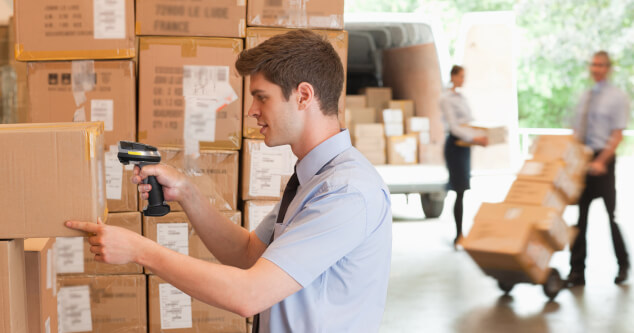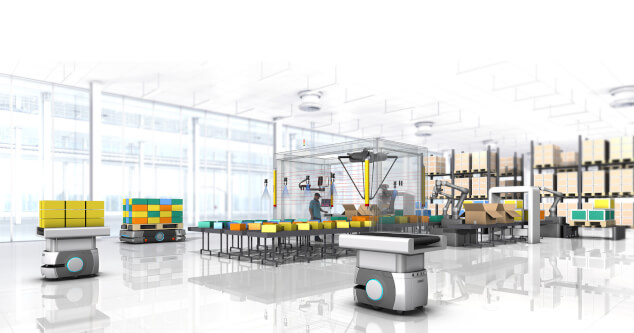Mastering packaging and intralogistics challenges in eCommerce
Published on 24 February, 2022 in Flexible Manufacturing
by John van Hooijdonk, Industry Marketing Manager FMCG at OMRON Europe
eCommerce is booming, and this is not only due to the Covid pandemic and its effects such as lockdowns or closed shops. In 2020, global web sales increased by more than 24 percent to around 4.3 trillion US dollars. These figures are not only pleasing to online retailers, they also come with growing challenges for service providers executing activities as packaging, co-packing, warehousing and intralogistics.
Quick and flexible approach for eCommerce
Slow turnaround times are no longer acceptable, putting e-tailers in a bind. Distribution and order fulfillment center’s alike have to cope with an ever increasing product mix (high-mix, low-volume); traceability plays an increasingly important role; health and safety for personnel as well as precision and speed are more important than ever. At the same time, there are more and more SKUs, there is often little space available, there is a lack of skilled labor in production and warehousing, and they have to meet the demand for more flexibility despite increasing volumes.Flexible scalability
When selecting a suitable solution, the requirements of the manufacturer as well as those of the warehouse and logistics partners are in the foreground. Power and performance must be considered as well as scalability – the systems, machines and technologies must be adaptable to changing needs, quality and optimal use of the available space in the factory and warehouse.
Robotic automation and inspection systems for eCommerce packaging
Automating as much of the manual packaging process as possible is vital. Automated packaging processes with robotics to free workers from having to perform more repetitive, complex, or hazardous tasks. Incorporating labeling, marking, coding machinery and inspection systems can help eliminate errors to meet increasingly stringent environmental and labeling regulations.- Inspection of incoming goods on characteristics such as label, container size and integrity, or a check on the agreed residual shelf-life and the delivery temperature.
- 3D bin picking where the challenge is match or exceed human capabilities in picking parts that are randomly placed in a container.
- Person-to-Goods (PTG) order picking methods to assist the warehouse operator, reducing the time needed for the gathering process and entering SKUs manually in a bin.
- Automated Pick & Place to handle different products, formats, sizes, tape length, protection material volume and more, improving efficiency and flexibility.
- Palletizing greatly benefits from automation as it is highly repetitive, and poses a great risk of injury to human workers.
- Transport of pallets with AMRs (Autonomous Mobile Robots) replacing forklifts to improve safety.
- Reduced production and labor costs
- Elimination of errors
- Optimal productivity, accuracy, and efficiency
- Reduced risk of contamination
- Reduced risk of personal injury to staff
- Increased versatility, flexibility, and reliability
